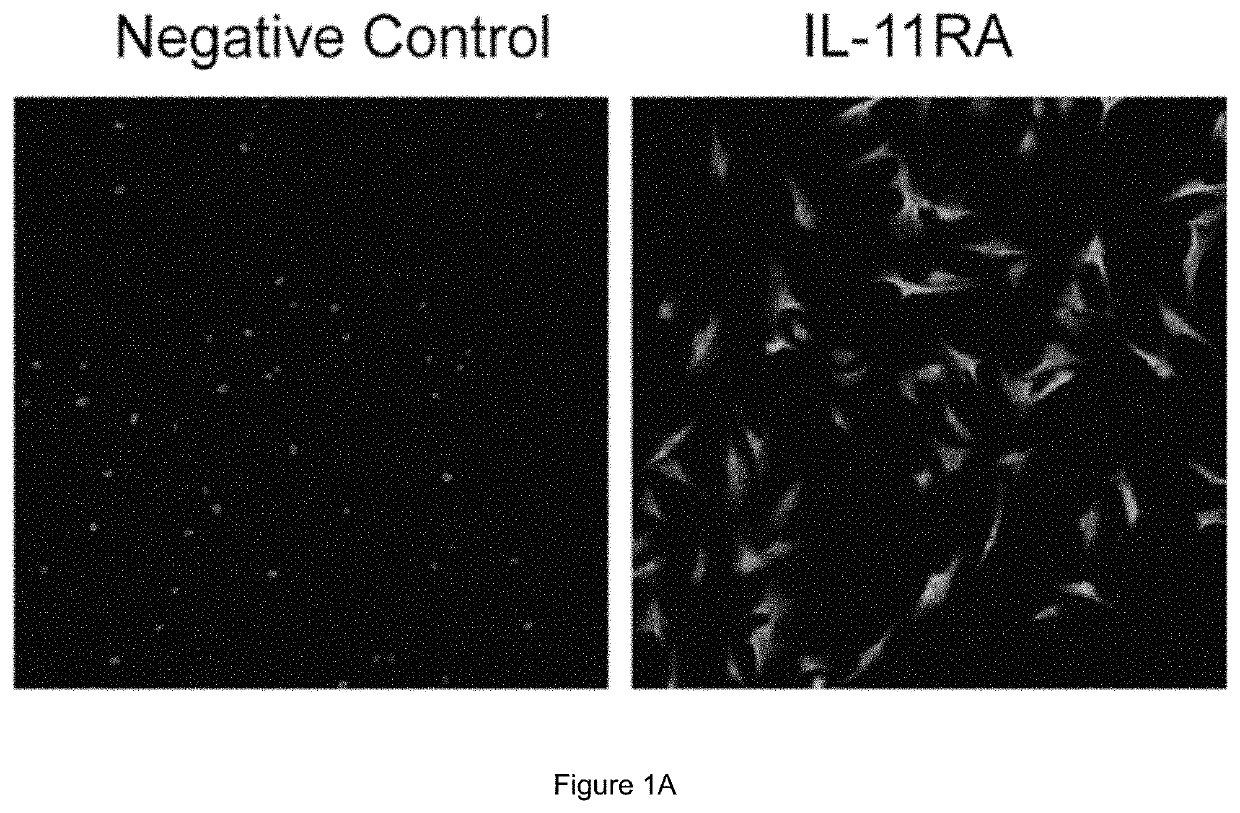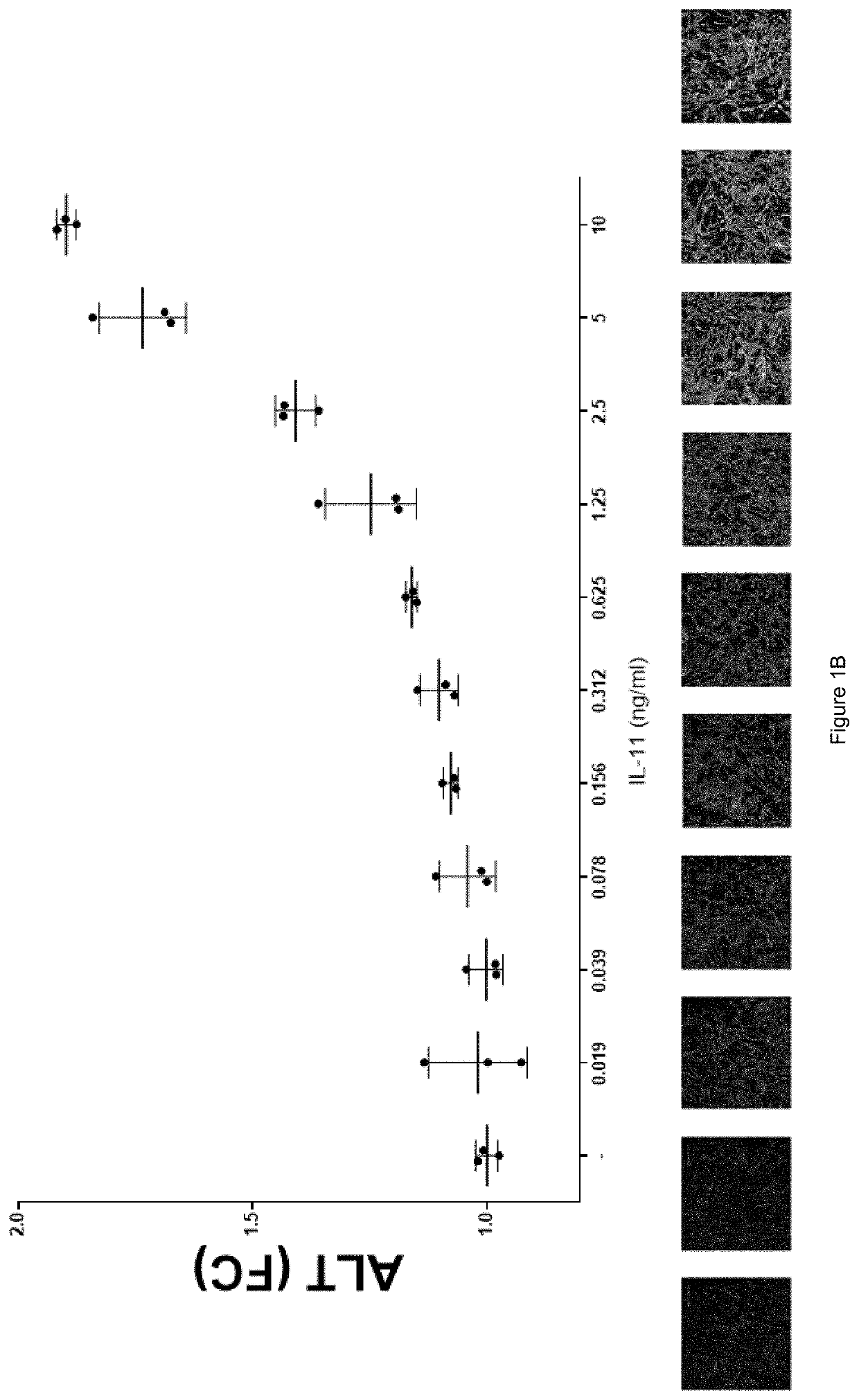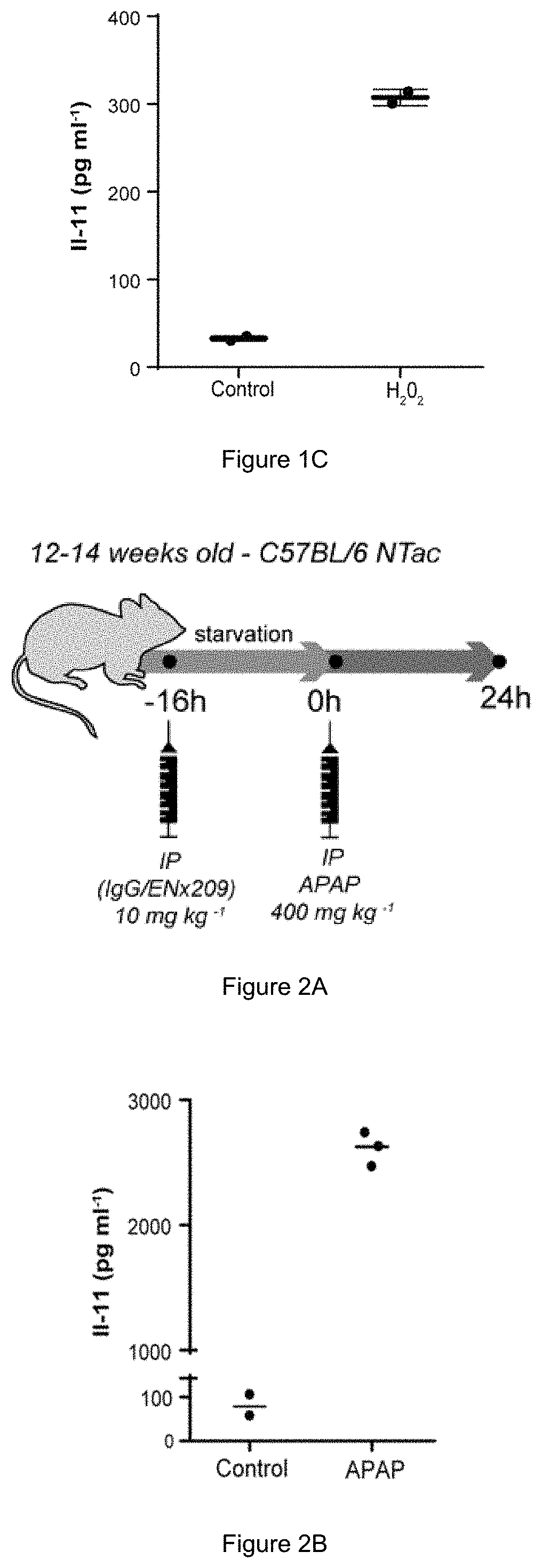Treatment of hepatotoxicity
a technology of hepatotoxicity and treatment, which is applied in the field of treatment of hepatotoxicity, can solve the problems of liver damage, accumulation of excess napqi due to glutathione depletion, etc., and achieve the effect of treating or preventing hepatotoxicity
- Summary
- Abstract
- Description
- Claims
- Application Information
AI Technical Summary
Benefits of technology
Problems solved by technology
Method used
Image
Examples
example 1
IL-11 on Hepatocytes
[0435]To investigate the effect of IL-11 on hepatocytes, experiments were performed with primary human hepatocytes in cell culture.
[0436]Human hepatocytes (5200, ScienCell) were grown and maintained at 37° C. and 5% CO2. Hepatocyte medium (5201, ScienCell) supplemented with 2% fetal bovine serum and 1% Penicillin-streptomycin was renewed every 2-3 days and cells were passaged at 80% confluence using standard trypsinization techniques. All the experiments were carried out at low cell passage (P2-P3) and cells were serum-starved for 16 hours prior to respective stimulations (24 hours) that were performed in serum-free hepatocyte media. Stimulated cells were compared to unstimulated cells that have been grown for the same duration under the same conditions (serum-free hepatocyte media), but without the stimuli.
[0437]IL-11Rα expression from human hepatocytes was determined by immunofluorescence staining. Human hepatocytes were seeded on 8-well chamber slides (1.5×104...
example 2
Anti-IL-11 Therapy on Hepatotoxicity
[0443]A mouse model of acetaminophen (APAP)-induced liver injury was employed to investigate the effect of anti-IL-11 therapy on hepatotoxicity.
[0444]This animal procedures were approved and conducted in accordance with the SingHealth Institutional Animal Care and Use Committee (IACUC). All mice were provided food and water ad libitum, unless during the starvation period.
[0445]Briefly, 12-14 weeks old male mice were starved and intraperitoneally (IP) injected with 10 mg / kg of anti-IL-11Rα antibody or IgG isotype control 16 hours prior to APAP (A3035, Sigma) injection (IP, 400 mg / kg). Mice were sacrificed 24 hours post-APAP administration.
[0446]The levels of IL-11 in mouse serum and hepatocyte supernatant were quantified using Mouse IL-11 DuoSet (DY418 and DY008, R&D Systems) and Human IL-11 Quantikine ELISA kit D1100, R&D Systems), respectively, according to the manufacturer's protocol.
[0447]Liver samples were excised and fixed for 48 hours at roo...
example 3
m of IL-11 Mediated Signalling Protects Hepatocytes Against Drug-Induced Cell Death
[0452]The effects of antagonism of IL-11 mediated signalling on hepatocyte viability was analysed in vitro.
[0453]Human hepatocytes (5200, ScienCell) cultured at 37° C. and 5% CO2 in hepatocyte medium (5201, ScienCell) supplemented with 2% fetal bovine serum and 1% Penicillin-streptomycin. Medium was replaced every 2-3 days, and cells were passaged at 80% confluence using standard trypsinization techniques. All experiments were carried out at low cell passage (P2-P3). Cells were serum-starved for 16 hours prior to their used in experiments, by culture in serum-free hepatocyte medium.
[0454]In a first experiment, hepatocytes were treated with APAP (A3035, Sigma) at a final concentration of 20 mM for 24 hours, in the absence (baseline, BL) or presence of antagonist anti-IL11RA antibody (X209, 2 μg / ml) or isotype-matched IgG control antibody (IgG, 2 μg / ml).
[0455]Hepatocytes were then stained using the FITC...
PUM
 Login to view more
Login to view more Abstract
Description
Claims
Application Information
 Login to view more
Login to view more - R&D Engineer
- R&D Manager
- IP Professional
- Industry Leading Data Capabilities
- Powerful AI technology
- Patent DNA Extraction
Browse by: Latest US Patents, China's latest patents, Technical Efficacy Thesaurus, Application Domain, Technology Topic.
© 2024 PatSnap. All rights reserved.Legal|Privacy policy|Modern Slavery Act Transparency Statement|Sitemap



